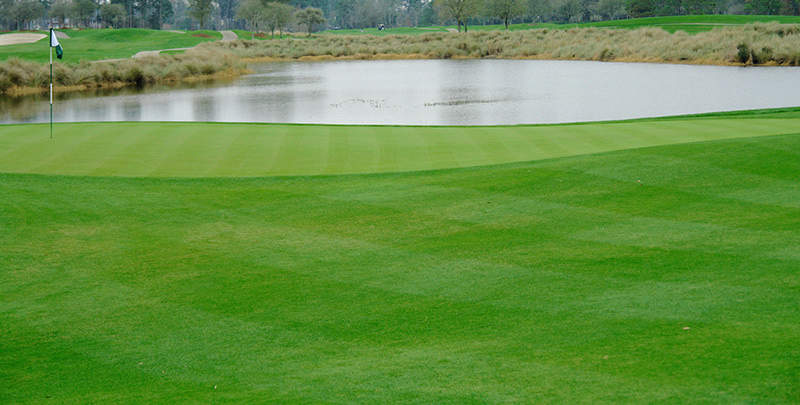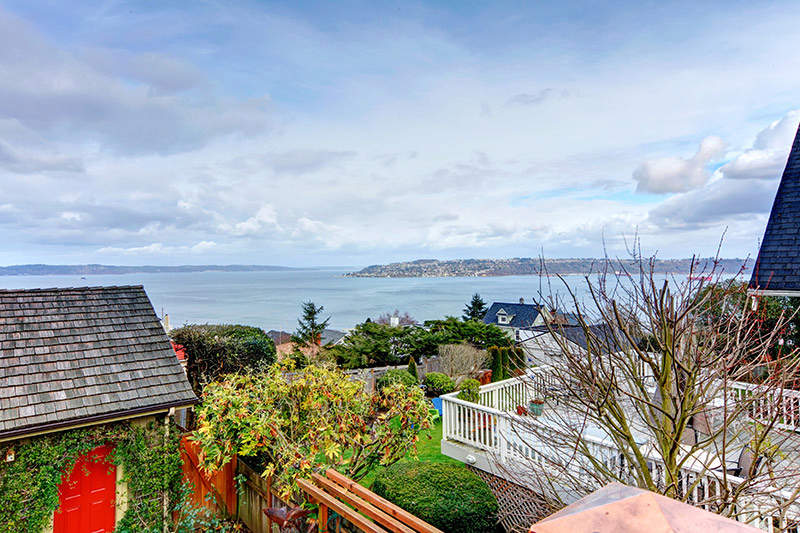All You Need to Know About Perennial Ryegrass
Perennial ryegrass is widely used throughout the United States, but the way it's used differs from region to region. This hard-working, fine-bladed grass wins fans with its fast germination rate and quick establishment. It's a valued component in permanent northern lawns and southern lawns in need of temporary winter color. Depending on where you live and your immediate lawn goals, perennial ryegrass may offer just what you need.
- Perennial Ryegrass at a Glance
- Perennial Ryegrass Basics
- Ryegrass For Overseeding Southern Lawns
- Other Perennial Ryegrass Considerations
- Perennial Ryegrass Lawn Care Calendar

Perennial Ryegrass at a Glance
- Cool-season lawn grass.
- Fast germination and seedling growth.
- Used for permanent and temporary lawns.
- Good cold tolerance.
- Heat and drought tolerance varies by variety.
- Withstands light shade.
Perennial Ryegrass Basics
Perennial ryegrasses are used throughout the United States as turf grasses and high-quality pasture grasses for livestock. Despite its agricultural uses, perennial ryegrass isn't related to the rye plant that produces cereal grain. It is related to the turf grass known as annual ryegrass, but these two plants differ, too.
As the name suggests, annual ryegrass is a short-lived grass used to provide quick color, short-term erosion control or temporary stability for a season. Turf-type perennial ryegrass is used in those same ways, but it comes back year after year in northern climates to establish a permanent lawn.
Like many common turf grasses used for permanent northern U.S. lawns, perennial ryegrass is native to Europe and Asia.1 It's not as cold-hardy as Kentucky bluegrass or tall fescue, but perennial ryegrass flourishes where summers are moderate and winters are cool. In the cool, humid Pacific Northwest, it has become one of the region's most widely used permanent lawn grasses, both on its own and mixed with other cool-season grasses.2
Ryegrass For Overseeding Southern Lawns
Even though perennial ryegrass naturally suits northern climates, southern lawn owners use it extensively. Warm-season grasses used in the south and west, such as Bermudagrass, go dormant and turn brown during cool winter months. Southern lawn owners keep lawns green in winter by seeding perennial ryegrass over existing warm-season lawns in fall. Fast-germinating perennial ryegrass creates a temporary green lawn for winter, then dies out when warm-season grasses green up and summer heat returns. Good cold and drought tolerance makes Pennington Smart Seed Perennial Ryegrass Grass Seed and Fertilizer Mix an excellent choice for winter overseeding in the southwest, where it is common to have green lawns year-round.

Other Perennial Ryegrass Considerations
Given the proper conditions, perennial ryegrass germinates faster than any other common lawn grass seed.2,3 Once established, however, it spreads slowly. Unlike aggressive Kentucky bluegrass, which spreads by underground stems called rhizomes, perennial ryegrass is a bunch-forming grass. Like tall fescue, it naturally grows in clumps and spreads through vertical shoots known as tillers, rather than spreading by rhizomes or horizontal above-ground stems called stolons.
Traditional perennial ryegrass varieties have relatively shallow roots, which historically limited their heat and drought tolerance compared to tall fescue or deep-rooted warm-season Zoysia grass. However, Pennington-affiliated research and breeding programs have developed improved varieties of perennial ryegrass with greater heat and drought tolerance.
Water-conserving Pennington Smart Seed Perennial Ryegrass Grass Seed and Fertilizer Blend is a drought-tolerant, premium blend of perennial ryegrass varieties with fertilizer-enhanced seed coat technology for quick establishment and lush, green, traffic-tolerant turf. Once established, these improved varieties require up to 30% less water year after year than ordinary grass seed. They also require less mowing than common perennial or annual ryegrasses do.
Perennial ryegrass is also a key component in cool-season grass seed mixes for northern and transition zone lawns and athletic fields. Its fast germination and rapid seedling growth provide quick color and stability, while slower germinating grasses such as Kentucky bluegrass get established. Perennial ryegrass prefers sun, but it will tolerate lightly shaded conditions.

Perennial Ryegrass Lawn Care Calendar
Perennial ryegrass, like other cool-season grasses, grows most vigorously during the cool fall and spring seasons. In permanent northern lawns, it slows down or goes dormant during summer months. To keep perennial ryegrass looking and performing its best, time your seasonal lawn care tasks to complement these natural cycles.
Weather conditions can vary significantly within perennial ryegrass' extensive growing region, so let your lawn help guide your timing from year to year. If you're uncertain about typical frost dates and planting times in your local area, check with your county extension agent. Then follow this perennial ryegrass lawn care calendar for a healthy, beautiful lawn.
MARCH THROUGH MAY
Mowing
Start mowing when your lawn starts growing. Maintain perennial ryegrass at a height of 1 1/2 to 2 1/2 inches to keep growth dense and looking good. Bag the season's first clippings to avoid spreading winter fungal disease.
Weed Prevention and Fertilization
Prevent crabgrass in your perennial ryegrass lawn while you fertilize in early spring. To target crabgrass, apply Pennington Full Season Weed & Feed with Crabgrass Control 25-0-8 before soil temperatures reach 55 degrees Fahrenheit and weed seeds start germinating
Seeding and Overseeding
Like other cool-season grasses, perennial ryegrass germinates best with temperatures between 50°F and 65°F. Next to fall, spring is the best time to seed lawns with Pennington Smart Seed Perennial Ryegrass Grass Seed and Fertilizer Blend.
With target actively growing weeds in late spring, feed your established lawn and control emerged broadleaf weeds with Pennington Full Season Weed & Feed with Crabgrass Control 25-0-8. Do not apply to newly seeded areas until you mow new grass at least three times. Wait at least three weeks after application before reseeding.
Watering
Water your established perennial ryegrass lawn so it receives about 1 inch of water per week, including rainfall. Water deeply and thoroughly to encourage deeper root growth.
JUNE THROUGH AUGUST
Mowing
Increase your mowing height to 3 to 4 inches during periods of heat and low rainfall. Mow often enough that you never remove more than one-third of the blade at any one time.
Fertilization
Fertilize your perennial ryegrass lawn in summer with a split application of Pennington Full Season Lawn Fertilizer 32-0-5.
Supplement rainfall with irrigation, as needed, so perennial ryegrass gets 1 to 1 1/4 inches of water per week.
Pest Control
Control lawn-damaging pests, including grubs and beetles, with Sevin Insect Killer Lawn Granules. Early control limits damage and prevents new generations of pests.
Soil Testing
Test your lawn soil every three to four years to confirm soil pH and nutrients. Perennial ryegrass prefers soil pH of 5.5 to 7.5. In areas with overly acidic soil, such as parts of the Pacific Northwest, your lawn may need lime to restore nutrient availability.
SEPTEMBER THROUGH NOVEMBER
Mowing
Gradually decrease your mowing height to 1 1/2 to 2 1/2 inches as fall temperatures arrive. Keep mowing your perennial ryegrass lawn until growth stops.
Weed Control and Fertilization
Treat broadleaf weeds and fertilize established perennial ryegrass lawns with a fall application of Pennington Full Season Weed & Feed with Crabgrass Control 25-0-8 six to eight weeks before your area's first expected frost.
Seeding and Overseeding
Early fall is the best time to plant cool-season grasses, including perennial ryegrass. Seed northern lawns with Pennington Smart Seed Perennial Ryegrass Grass Seed and Fertilizer Blend about 45 days before your area's typical first fall frost. Overseed southern lawns for winter color once the warm-season grass starts to go dormant and turn brown and when overnight air temperatures drop near 65 to 70 Fahrenheit.
Watering
In northern lawns, gradually reduce watering. Supplement rainfall, as needed, so perennial ryegrass gets 1 inch of water every 10 to 14 days. In southern lawns, continue regular irrigation so that perennial ryegrass gets 1 inch of water per week.
Aeration and Dethatching
Aerate compacted soil as needed. Clump-forming perennial ryegrass typically does not produce significant thatch.
Leaf Management
Rake or mulch fallen leaves so perennial ryegrass enters winter free of leaf cover.
DECEMBER THROUGH FEBRUARY
Southern Lawn Maintenance
Continue to mow and water perennial ryegrass in dormant warm-season winter lawns on a regular maintenance schedule.
Northern Lawn Maintenance
Keep your lawn free of winter debris. As soil thaws in late winter, flush areas affected by de-icing salts or pet urine damage. Maintain mowers and turf tools to be ready for spring.
When you need a fast-establishing turf grass for northern or southern applications, perennial ryegrass can provide the speed, strength and color you need. Pennington is dedicated to helping you grow the finest lawn possible, wherever you grow. With the help of premium grass seed, lawn care products and online resources, your lawn can be everything you hope it will be.
Always read product labels thoroughly and follow instructions.
Sources:
1. Duble, R.L., "Ryegrass, Temporary Sports Turf for the South," Texas A&M Agrilife Extension.
2. Cook, T., "Perennial Ryegrass Lolium Perenne L.," Oregon State University Department of Horticulture.
3. UC Statewide Integrated Pest Management Program, "Grass Seed Germination Rates," University of California Agriculture & Natural Resources.
4. Hart, J.M., et al., "Perennial Ryegrass Grown for Seed," Oregon State University Extension, November 2013.


